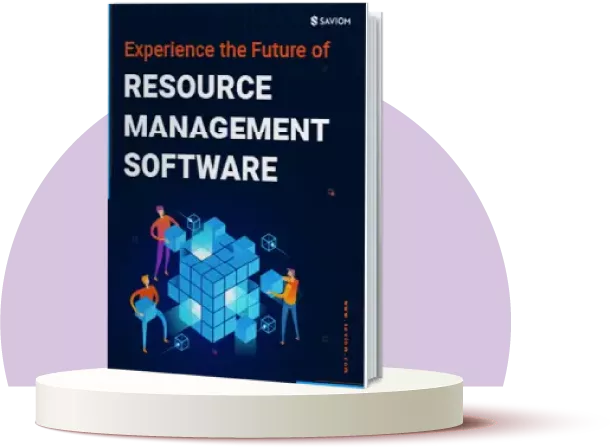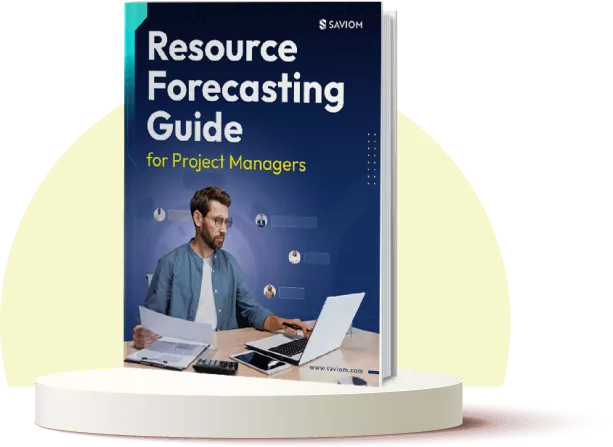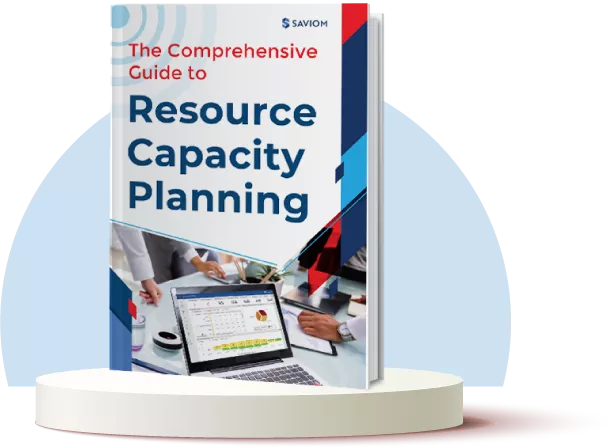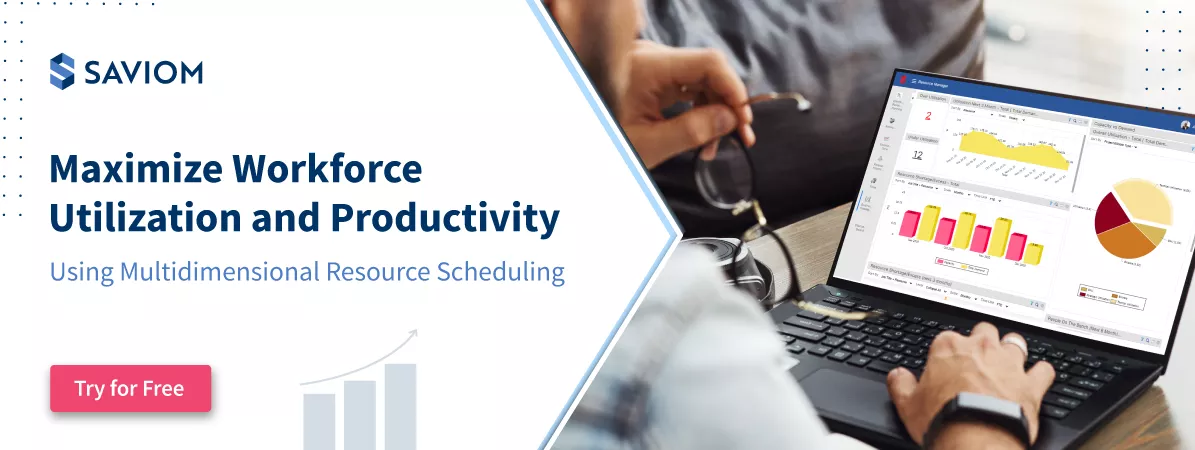Are you constantly struggling to visualize and achieve your organization’s long-term goals?
Do you often resort to last-minute firefighting to mitigate skill shortages/gaps?
Are you wondering how you will make your workforce future-ready and sustain business profitability?
Effective strategic workforce planning is required to address these ongoing challenges. It helps firms anticipate future talent requirements and create a forward plan to ensure the company has the right mix of talent. It also enables them to achieve future business goals, thereby maintaining profitability and sustainability.
This blog emphasizes the benefits of strategic workforce planning in an organization and elucidates the steps to create an effective plan.
Let’s begin with understanding the basics.
What is Strategic Workforce Planning?
Strategic workplace planning (SWP) is the process of forecasting and analyzing workforce supply and demand to achieve long-term business goals. It involves identifying current and future workforce requirements, addressing talent gaps, and implementing strategies to bridge them effectively. These objectives are typically aligned with 5+ years of strategic vision, ensuring the organization remains prepared for evolving business needs.
The 7R’s of Strategic Workforce Planning
The key principles that ensure the effective implementation of workforce strategies are given below.
Right People: Ensuring the organization has employees with the necessary skills, qualifications, and competencies.
Right Skills: Identifying and nurturing the skills needed to achieve current and future business objectives.
Right Roles: Allocating individuals to positions that align with their expertise and the organization’s strategic goals.
Right Size: Ensuring the workforce is appropriately sized to meet organizational demands without under or overstaffing.
Right Place: Strategically positioning employees in locations or roles where their contributions can have the greatest impact.
Right Time: Ensuring the workforce is available when needed to meet organizational demands.
Right Cost: Balancing workforce-related expenses to ensure cost-effectiveness without compromising quality or productivity.
Now, let’s understand strategic workforce planning with an example.
Strategic Workforce Planning Examples
Let’s assume that an IT startup company works from one location. However, within three to five years, the company plans to expand into three different geographical areas. To accomplish this long-term goal, the firm needs the right resources with the right skill sets.
So, what can strategic workforce planning for this startup comprise of?
It can encompass steps like:
- Understanding and defining the long-term goals, i.e., what are the areas where the firm would like to expand its business?
- How many resources do they need for each different place and department?
- What are the skills required for it, and identifying the gap?
- How to manage the cost and ensure that there is no overrun?
- What are the possible risks that can come across the way?
Read more: What is Workforce Planning, and How Does It Help Improve Business Efficiency?
Now that you have understood the basics of strategic workforce planning, let’s analyze its significance.
Benefits of Strategic Workforce Planning
According to a survey, 77% of HR leaders feel strategic workforce planning is vital for their own success.
Here are some reasons as to why –
Align Workforce Requirements with Long-term Business Strategy
It is impossible for firms to have the right resources at the right time without a clear understanding of their future goals. Therefore, creating strategic workforce planning is essential as it helps align the workforce requirements with the business strategy. In addition, it streamlines the hiring process and helps attract and retain top talent, which positively impacts company growth.
Keeps Project Cost Under Control
By having the right number of employees with the right skills, strategic workforce planning helps prevent overstaffing or understaffing, ensuring that projects are executed efficiently. This helps avoid skill mismatches, unnecessary hirings, or dependency on expensive contractors. Thus, firms can ensure projects are initiated on time and facilitate better adherence to the project costs.
Helps Address Skill Gaps Between Current & Future Resource Demands
Strategic workforce planning helps firms carefully analyze the skill sets of the current employees and anticipate future resource demand. Through this evaluation, managers can identify any talent shortages or skill gaps and take corrective actions ahead of time. This will enable you to acquire top talent or make your workforce future-ready for your company’s success.
Read more: How to Measure Resource Capacity and Demand?
Deliver Current and Future Projects Within Time & Budget
Various challenges like- unavailability of niche resources, skill gaps, changes in prioritization, etc. can negatively impact project delivery. Strategic workforce planning can help firms stay ahead of these challenges and be better prepared to handle them by developing a mitigation plan ahead of time. As a result, the projects are delivered within the stipulated time and budget without compromising quality.
Facilitates Effective Talent Management
SWP offers a structured approach to identifying, developing, and retaining talent by assessing current skills and forecasting future needs. By analyzing workforce data and pinpointing skill gaps, HRs can plan targeted training programs or recruitment processes. It further supports career development by identifying clear pathways for employee growth, enhancing workforce engagement, and ultimately reducing turnover.
Read more: What is Talent Management? A Comprehensive Guide
Assists in Succession Planning for Critical Roles
When an organization lacks succession planning, projects can stall as there can be a deficit of critical resources, affecting the business. Strategic workforce planning can be leveraged by companies to review key leadership and business-critical roles. This will help them identify and prepare suitable employees to fill critical positions when current employees leave their jobs and ensure a smooth business continuation.
Given its benefits, let’s switch to popular strategic workforce planning frameworks that help firms assess their capability.
Strategic Workforce Planning Models
Several strategic workforce planning models help firms assess what they have now, what they need, and what they should do. So here are two standard models that firms can employ –
HCI Model
The HCI (Human Capital Institute) model is a widely recognized framework for strategic workforce planning centered around three core elements: people, strategy, and operations.
The model outlines eight distinct steps and they are as follows –
- Articulate the business strategy
- Segment roles
- Conduct an environmental scan
- Analyze the current workforce state
- Construct a detailed future
- Identify gaps
- Create an action plan
- Monitor and report
This model highlights the significance of aligning the talent management process with organizational objectives while considering operational aspects like budget limitations and resource accessibility.
OPM Model
The OPM (Office of Personnel Management) model adopts a more process-oriented approach, emphasizing the efficient use of the workforce. This framework is built to enhance workforce utilization and optimize performance across an organization.
Here are the five essential steps of the model –
- Set strategic direction
- Conduct workforce analysis
- Develop a workforce action plan
- Implement and monitor the workforce action plan
- Evaluate and revise the plan
By focusing on key steps such as workforce forecasting, skills analysis, and performance management, the OPM model helps organizations make data-driven decisions to create an adaptable workforce and enhance productivity.
Read more: What is Operational Workforce Planning and How it Benefit the Organizations?
In the following section, let’s see how an optimized strategic plan can be developed.
How To Create an Effective Strategic Workforce Plan?
An effective strategic workforce plan centers around five key steps. Let’s discuss these one by one-
Understand the Long-term Objectives
For this, HRs must first coordinate with various stakeholders, line managers, executives, etc., to determine the strategic areas and ascertain the business goals. Then, they can define SMART goals (Specific, Measurable, Attainable, Relevant, and Time-bound) that align with the company’s values and ensure the firm works towards them.
Analyze the Current & Future Resource Requirements
The second step in the planning process is to analyze the skill demand required to deliver it. For this, the firm must assess the current and future pipeline demands to understand the type, experience levels, quantity, and quality of skill required to achieve the goals. This lays the groundwork for informed decision-making, enabling businesses to proactively prepare for challenges.
Read More: What is Resource Forecasting? A Guide for Project Managers
Identify and Bridge the Skill Gaps
Once the requirements are established, the next step is to look into the resource pool and evaluate the skills and competencies. It will help identify the skill gaps and take the necessary measures to bridge them. They can either go for upskilling, retraining, job shadowing, etc., for existing employees or hire permanent/contingent resources based on the project’s requirements and budget. This helps the timely acquisition of talent for projects.
Devise a Risk Mitigation Strategy
Risks are inevitable, and therefore, it is crucial to anticipate potential resource risks before they disrupt the business continuity. Some risks include unplanned leaves, high employee turnover, lower productivity, market volatility, technological change, etc. Once identified, leaders must develop a risk mitigation strategy to address these challenges and meet long-term goals efficiently.
Read More: Top 12 IT Project Risks: Effective Ways to Mitigate Them
Monitor and Improve the Plan at Regular Intervals
The final step is to regularly execute and monitor the strategic workforce plan to ensure it’s on the right path. For this, firms can employ and continuously track various performance metrics in real time. It will help identify the areas of progress and improvements and address any issues. Thus, organizations can meet their business objectives and strategic goals successfully.
Read More: Top 15 Operational Metrics That a Business Should Monitor
Having understood the key steps, let’s focus on best practices.
Strategic Workforce Planning Best Practices
When creating an effective strategic workforce plan for an organization, it is vital to note some best practices that help improve the plan.
Given below are a few strategic workforce planning best practices –
Establish & Engage the Stakeholders Across Departments
It is critical to determine and involve stakeholders from various departments to ensure SWP aligns with the organizational goals. When business leaders include department heads from finance, operations, etc., they gather diverse perspectives on workforce requirements, skill demands, and potential resource risks, making the plan more insightful and actionable.
Further, this active involvement also fosters strong collaboration, accountability, and ownership, which enhances the planning & implementation of workforce strategies. The collaborative approach streamlines decision-making and promotes a culture of transparency and shared responsibility, ensuring the workforce plan remains relevant and effective in meeting business objectives.
Read More: 10 Ways to Improve Cross-Departmental Collaboration
Conduct Skill Gap Analysis & Maintain an Inventory
A skill gap analysis involves evaluating the current skills and competencies within the firm to achieve the business goals. This process helps identify areas where the workforce may lack expertise or if additional training and development are needed. By addressing these gaps proactively, firms can enhance their workforce’s readiness to meet current and future demands, minimizing the risks of project delays.
At the same time, maintaining an inventory of employee skills and qualifications complements the gap analysis by providing a centralized database of workforce capabilities. This inventory allows managers to identify resource availability for specific roles quickly, plan for succession, and allocate them effectively. Together, skill gap analysis and inventory enable the firm to build a highly skilled and adaptable workforce.
Read More: What is Resource Allocation, and Why is it Important?
Provide Learning & Development Opportunities to the Workforce
This is another best practice ensuring employees continuously enhance their skills to meet evolving business needs. It involves designing targeted training programs, reskilling initiatives, and professional development plans that address identified skill gaps and future requirements. By investing in employee growth, organizations enhance workforce capabilities and improve overall productivity and performance.
L&D initiatives also foster employee engagement and retention by demonstrating the organization’s commitment to their professional growth. Employees who feel valued and supported are more likely to remain motivated and loyal, reducing turnover rates. Moreover, it creates a continuous learning culture that helps employees adapt to technological or industrial shifts, ultimately making them future-ready.
Read More: 7 Effective Retention Strategies for Niche-Skilled Resources
Consider External Workforce Trends
External trends such as technological advancements, shifts in industry demand, and changes in workforce demographics can significantly influence talent availability and skill requirements. By analyzing these trends, organizations can anticipate future resource constraints, such as potential skill shortages or increased competition for talent, and develop proactive strategies to address them.
Additionally, analyzing competitive benchmarks and regional labor market conditions provides insights into compensation trends. This information helps organizations optimize recruitment efforts, ensure competitive pay structures, and attract top talent. Thus, staying informed about external trends ensures that strategic workforce plans are both forward-looking and adaptable to external influences.
Leverage the Right Software & Technologies
Advanced tools like workforce analytics platforms and resource management software enable organizations to collect, analyze, and visualize critical data, including capacity & demand, utilization, and skill inventories. These technologies provide real-time insights and predictive analytics, helping managers make informed decisions about resource allocation, workforce optimization, and future planning.
Moreover, adopting the right technologies ensures scalability and adaptability to changing workforce requirements. Integration of these tools with existing HR and other systems promotes seamless collaboration across departments, further enhancing strategic alignment. Thus, by employing the right technologies, firms can improve efficiency, accuracy, and decision-making, thereby promoting long-term success.
Read More: How Can You Make Data-Driven Decisions with Resource Management Software?
Now, let’s look at how powerful resource management software can assist in achieving these goals.
How Can Resource Management Software Improve Strategic Workforce Planning?
A modern resource management solution enables organizations to build an optimized workforce to achieve strategic goals by offering various advanced features.
Here are a few key features –
- The tool offers a 360-degree visibility into various dimensions like skill, cost, location, etc., enabling managers to streamline strategic workforce planning processes.
- The tool’s demand forecasting feature allows managers to assess and determine current & pipeline project requirements, enabling them to identify skill gaps in advance.
- With the help of capacity planning, managers can perform supply vs. demand gap analysis and determine potential resource shortage/excess. This proactive approach enables them to take corrective measures ahead of time.
- The in-built competency matrix facilitates smooth tracking of workforce skills and capabilities which lets the management make the right decisions regarding promotions and improve the accuracy of succession planning.
- Real-time reports, analytics, and dashboards are another feature that provides real-time actionable insights into various resource matrices through color-coded heatmaps, forecast vs actual, people on the bench reports etc.
- Finally, the What-if analysis simulates and compares different scenarios to explore potential outcomes and their impact on the business. This helps firms make better decisions regarding strategic workforce planning and execution.
Read More: How to Select the Best Software Using Cost-Benefit Analysis?
Conclusion
In today’s environment of rapid change and uncertainty, there is constant pressure on businesses to ensure they have the required talent pool to support changing business demands. Therefore, strategic workforce planning is critical in ensuring the organization has the right mix of talent to accomplish these future goals. This helps businesses gain a competitive edge and improve the bottom line significantly.
So, are you ready to create an efficient strategic plan and reach new heights of success?
The Glossary
Read More: Glossary of Resource Workforce Planning, Scheduling and Management











